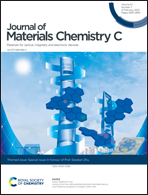Surface adhesion engineering for robust organic semiconductor devices
Abstract
Devices based on organic semiconductors have been widely used in various applications, for example, organic photovoltaics, organic thermoelectrics, organic solar cells, organic field-effect transistors, and organic sensors. The robust construction of organic semiconductor devices is of vital importance for stable and reliable operation work in real-world environments. The performance and lifespan of organic semiconductor devices, e.g., mechanical and electrical robustness and durability, are normally improved by enhancing the adhesion between the interfaces of organic semiconductors and supporting substrates. In this perspective, we first introduce the basics of surface adhesion from interfacial interactions and characterization methods. Then, diverse strategies for enhancing the interfacial adhesion are summarized, including (i) introducing additional adhesive layers between the interfaces of organic semiconductors and supporting substrates, (ii) functionalizing organic semiconductors with adhesive chemical groups, (iii) integrating adhesive linkers and organic semiconducting units into one chemical entity, and (iv) physically mixing organic semiconductors with various adhesive additives. Mechanisms are further discussed to provide a better understanding of the relationship between molecular interactions and macroscopic adhesion. We also provide a perspective on the up-to-date challenges and future developments in robust organic semiconductor devices.

- This article is part of the themed collections: Journal of Materials Chemistry C Recent Review Articles and Special issue in honour of Daoben Zhu


 Please wait while we load your content...
Please wait while we load your content...